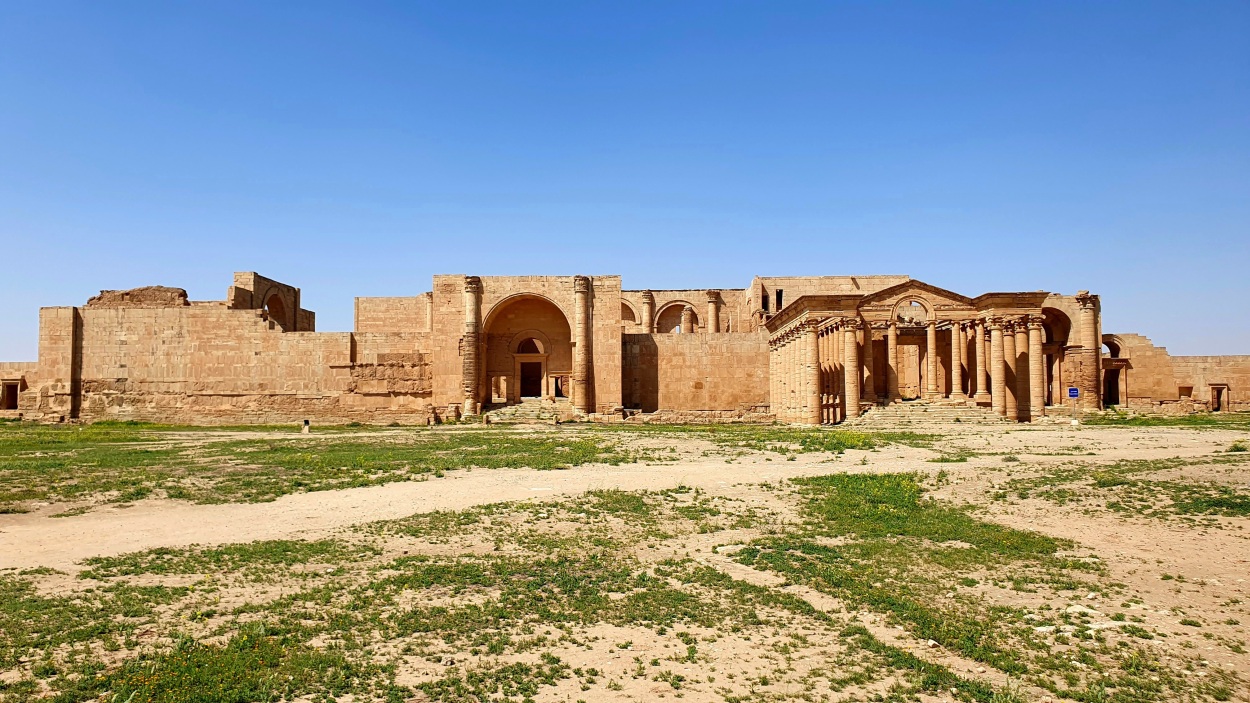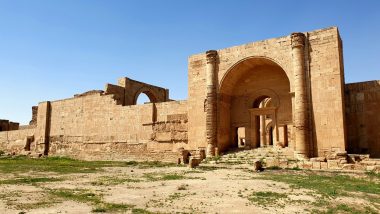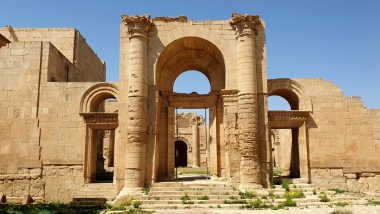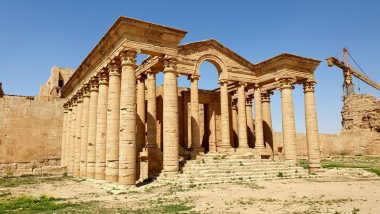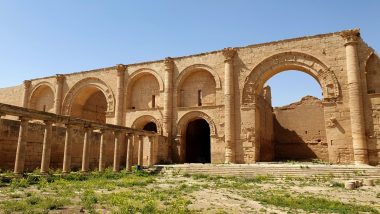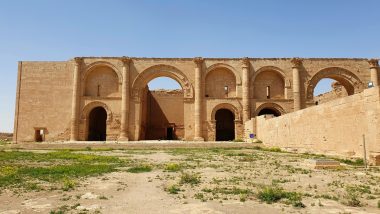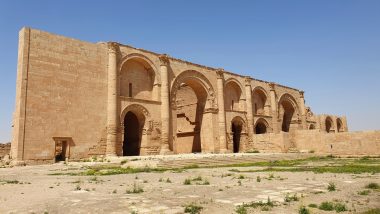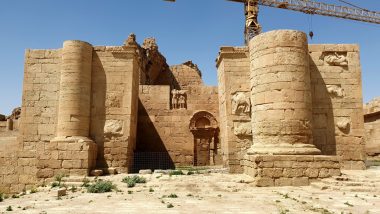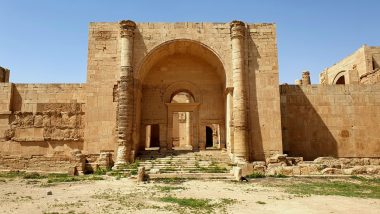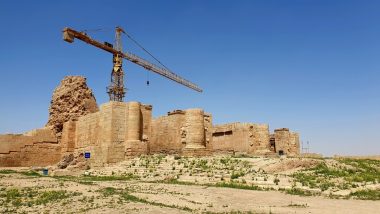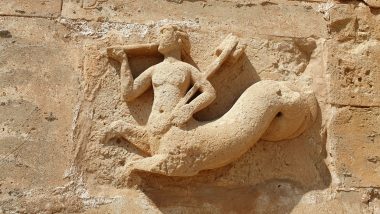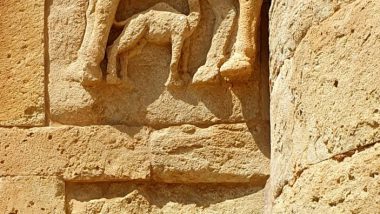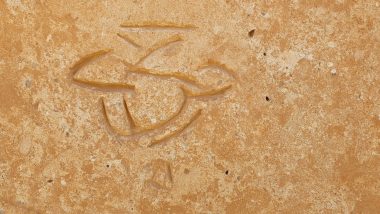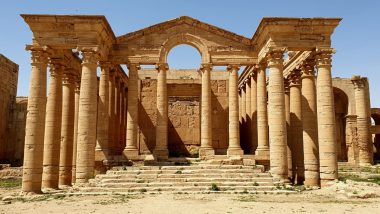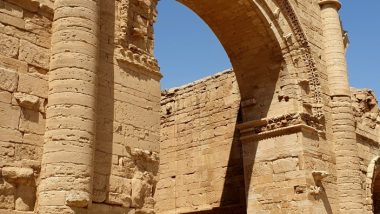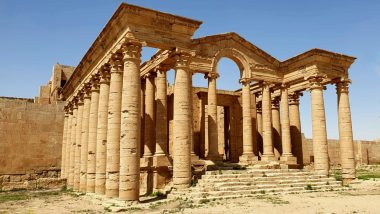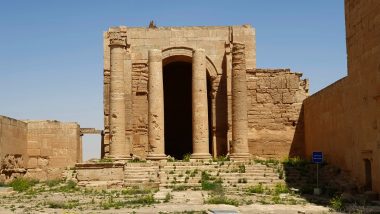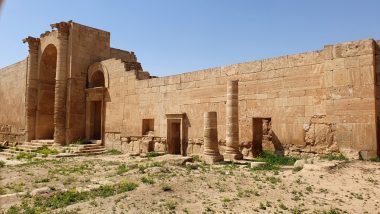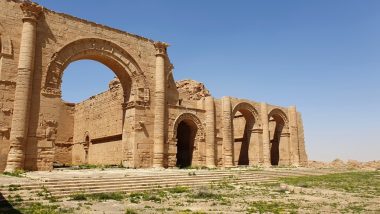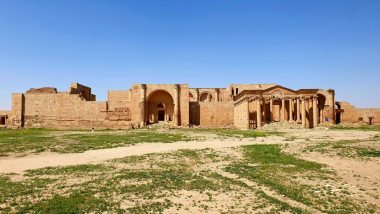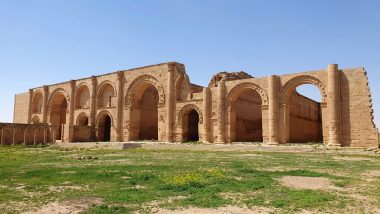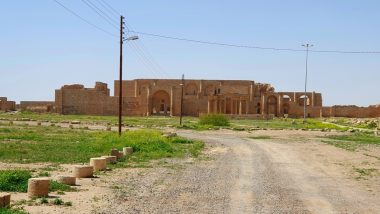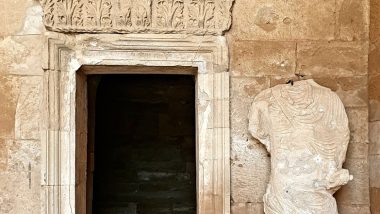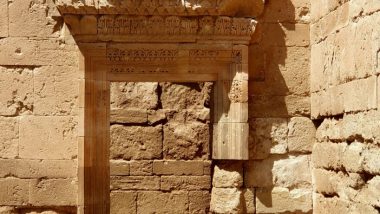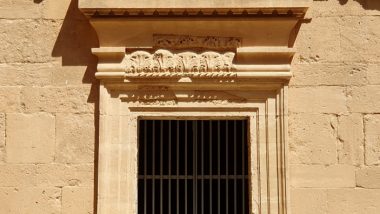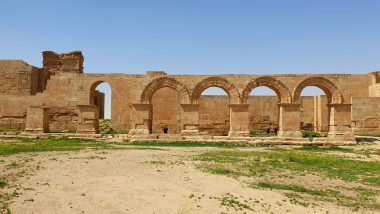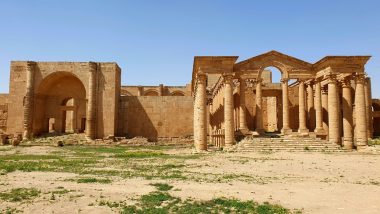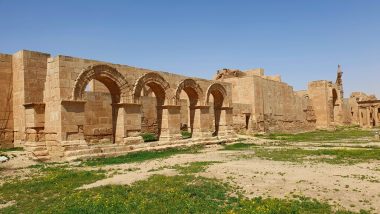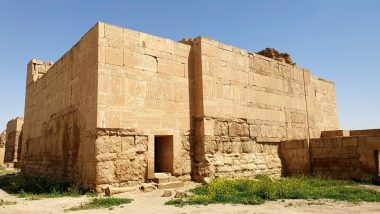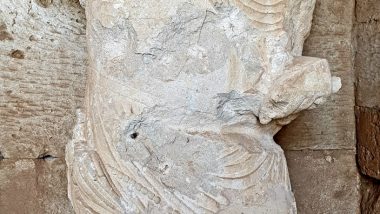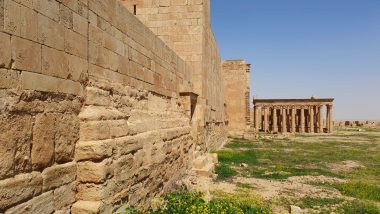We drove one hour with our guide Othman from @visitmosulofficial to Hatra (🎫 25000 IQD). It is a ruined city in the Al-Jazīrah region, 290 km northwest of Baghdad and 110 km southwest of Mosul. It was s religious and trading center of the Parthian empire. It flourished during the 1st and 2nd centuries BC. The city survived several invasions before being razed in 241 CE. It is an important archaeological site with well-preserved ruins.
In the 1st and 2nd centuries, Hatra was ruled by a dynasty of Arabian princes whose written language was Aramaic, and it became known as Beit. Among the gods honored in the city’s numerous temples were the Sumero-Akkadian god Nergal, Hermes (Greek), Atargatis (Aramean), and al-Lāt and Shāmiyyah (Arabian), along with Shamash, the Mesopotamian sun god.
Built in a circular plan of military tradition, Hatra was able to turn back many attacks, including sieges by Roman forces in 116/117 (led by the emperor Trajan) and 198/199 (under the emperor Septimius Severus). About 240 CE, however, the city fell to Shāpūr I (reigned c. 240–272), ruler of the Persian Sāsānian dynasty, and was destroyed. According to legend, al-Naḍīrah, the daughter of the king of Hatra, betrayed the city and permitted Shāpūr to conquer it, slay the king, and later marry her. However, tradition also holds that Shāpūr soon killed his bride.
Hatra is the best-preserved and most-informative example of a Parthian city. It is encircled by inner and outer walls nearly 6,4 km in circumference and supported by more than 160 towers. The temples cover some 1,2 hectares and are dominated by the Great Temple, an enormous structure with vaults and columns that once rose to 30 meters. In 1985 Hatra became a UNESCO World Heritage site. Unfortunately, although the Iraqi government supported a significant restoration project in the 1990s, the site was looted many times. Likewise, though it suffered no damage during the Iraq War (2003–11), several artifacts that had been excavated there came up missing when the National Museum of Iraq was plundered in the chaos that followed the start of the conflict.
In April 2015, videos showed members of the ISIL smashing statues and decorations around the site. It was also reported that parts of the area had been bulldozed.


